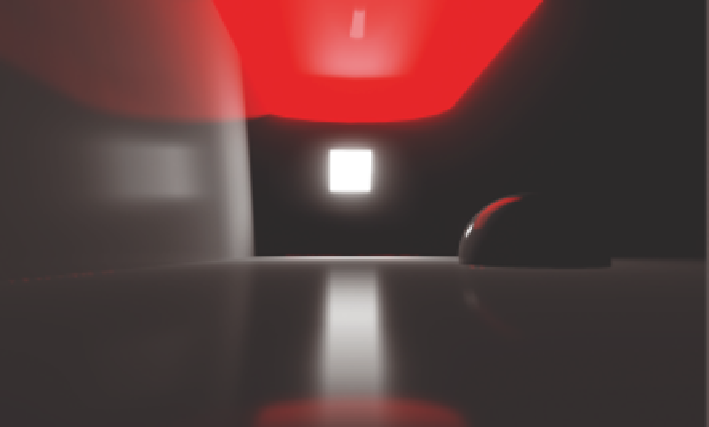Graphics Reference
In-Depth Information
Figure 1.30.
Square light shape using GGX distribution exhibiting minor visual arti-
facts.
We prototyped this approach, for rectangular lights, by analytically finding a
polygon representing the light shape and the projected specular cone intersection.
To find the intersection at runtime, we used a GPU-optimized version of the
Liang-Barsky clipping algorithm [Liang and Barsky 84]. A light shape rectangle
was treated as the clipping window, then a polygon representing the projected
specular cone was clipped against it. The end result was an array of vertices
representing a planar, non-self-intersecting polygon. In order to find the polygon's
area, we used the Gauss formula for arbitrary polygon area.
Unfortunately, a busy production schedule has prevented further research in
that promising direction. Figure 1.31 shows the proposed idea geometrically with
reference shader-based solution results (Figure 1.32).
Another proposed area of research includes nonradially symmetrical PDFs
support for texture-based area lights. We experimented with multisampling ap-
proaches and approximating the PDF at runtime; however, it proved to be too
expensive for our real-time budgets.
1.7 Conclusion
We provided a tested framework for developing various physically based, area-
based lighting models using currently researched BRDFs as the starting point.
Implementation proved to be robust and ecient enough for the rendering engine
of
Killzone: Shadow Fall
, a launch title for Playstation 4.









